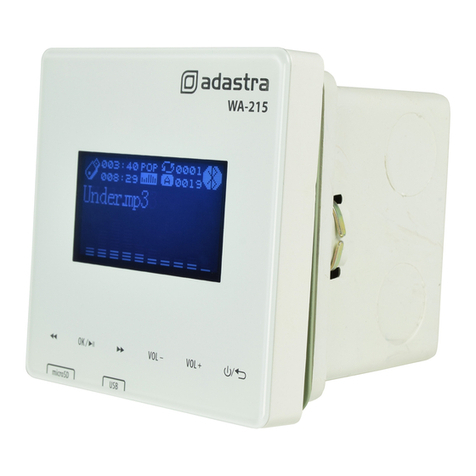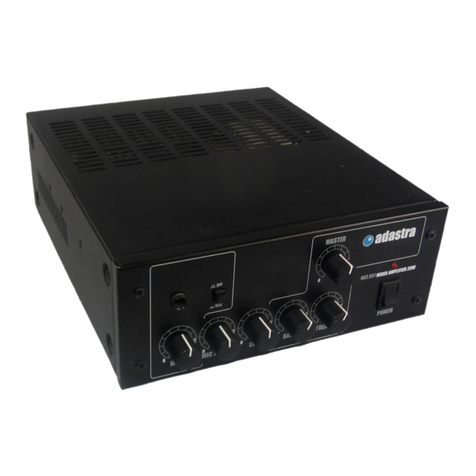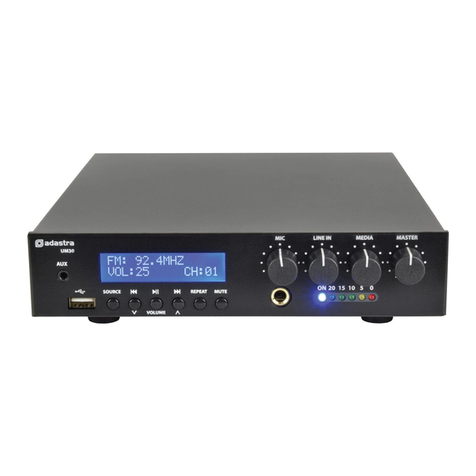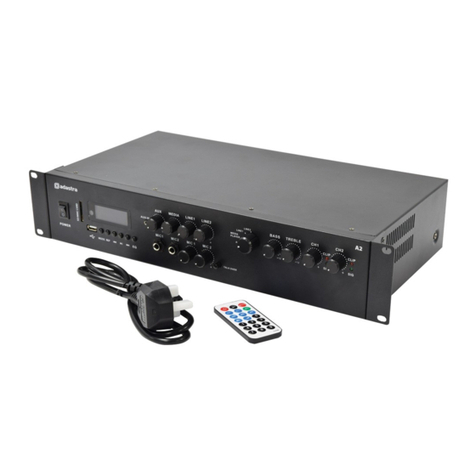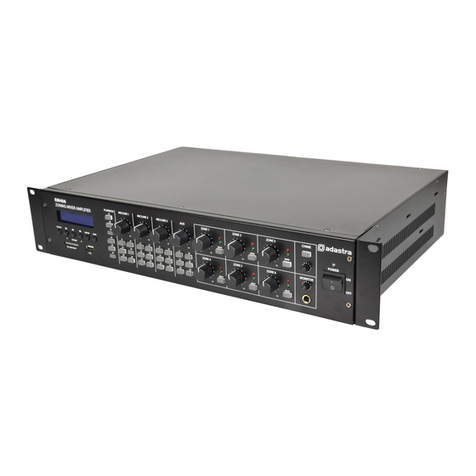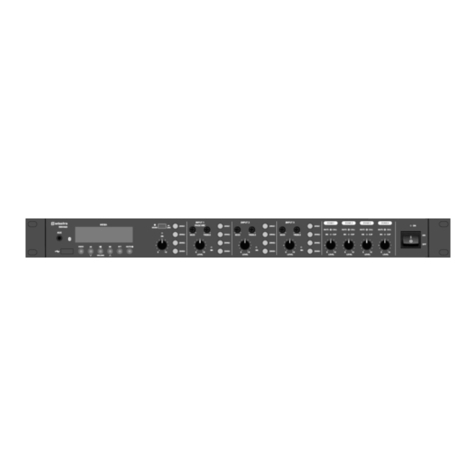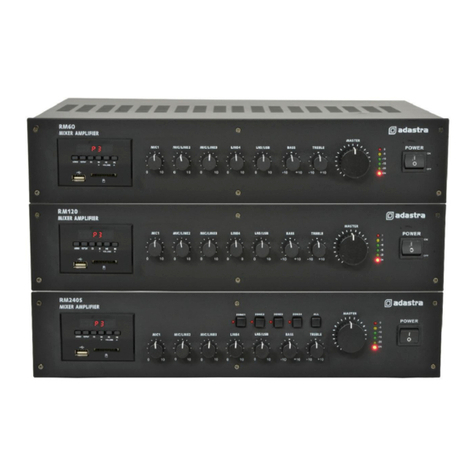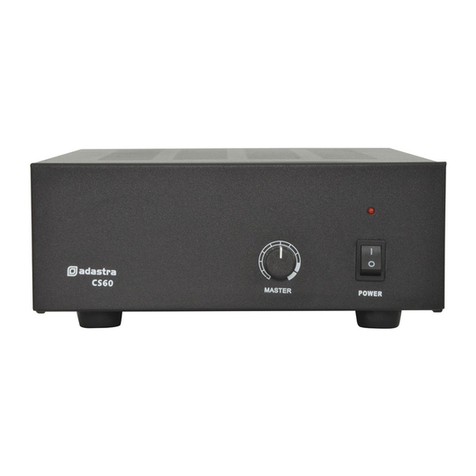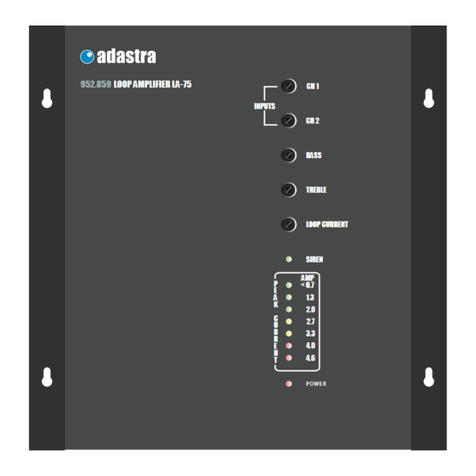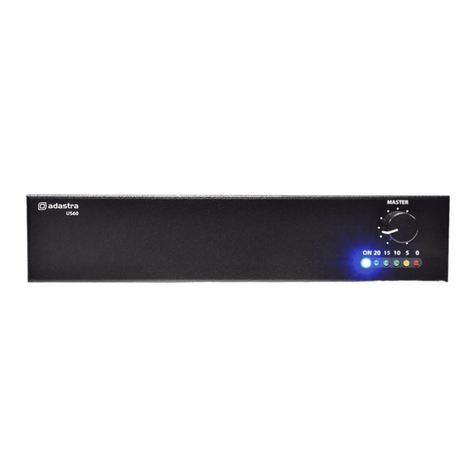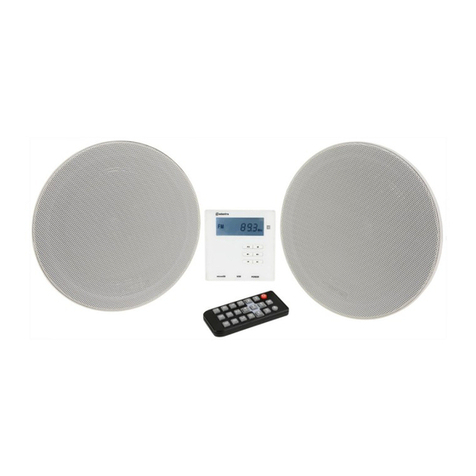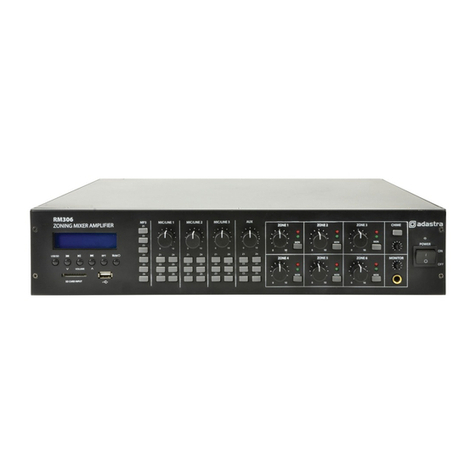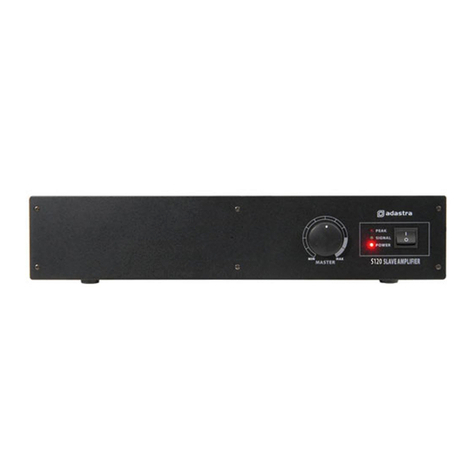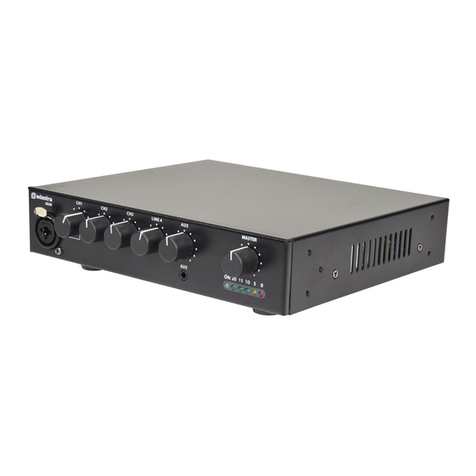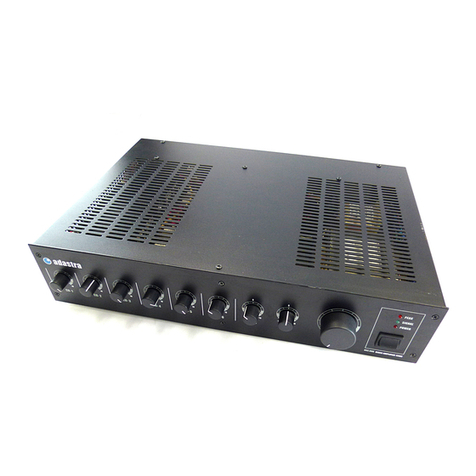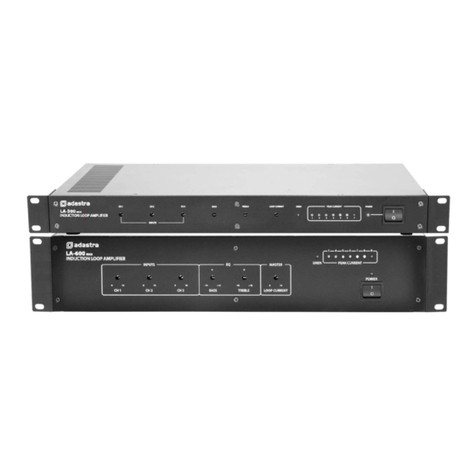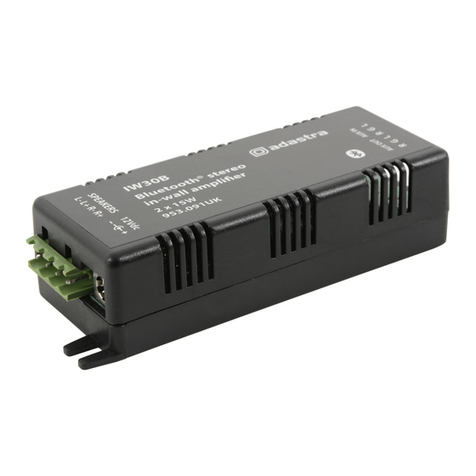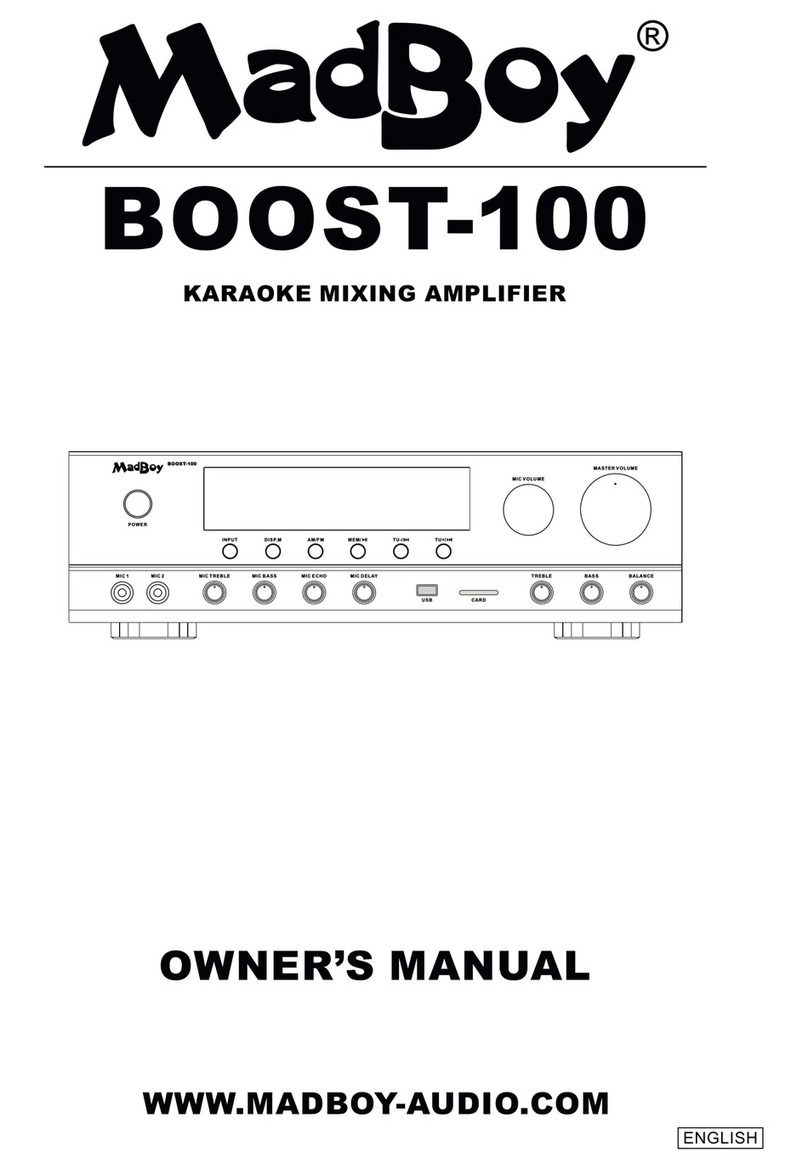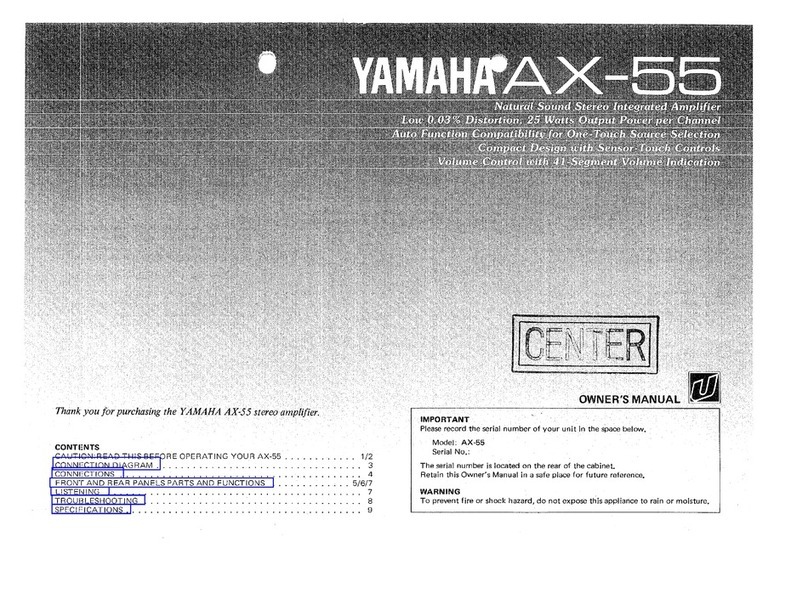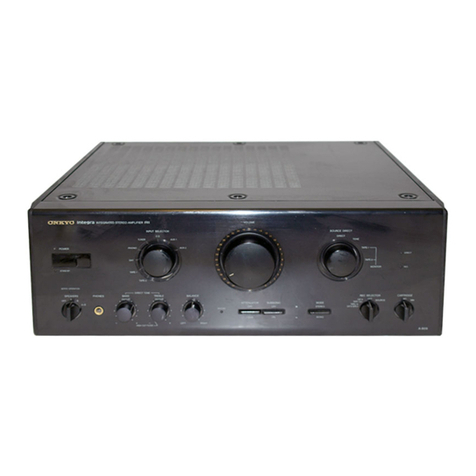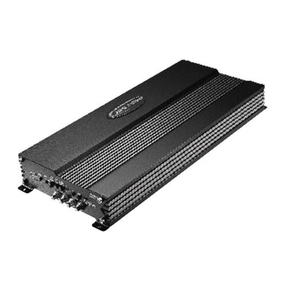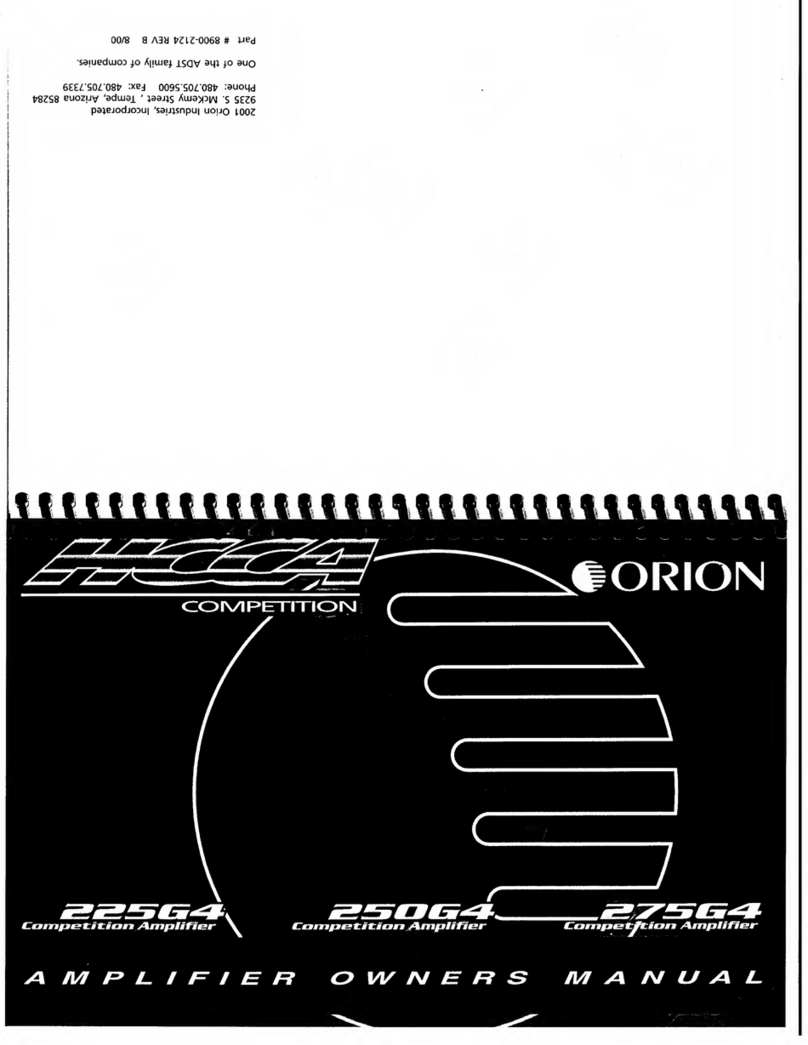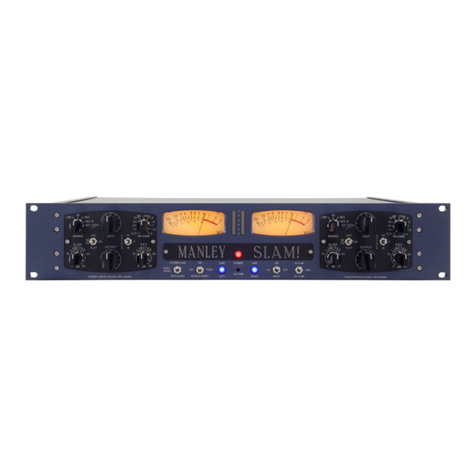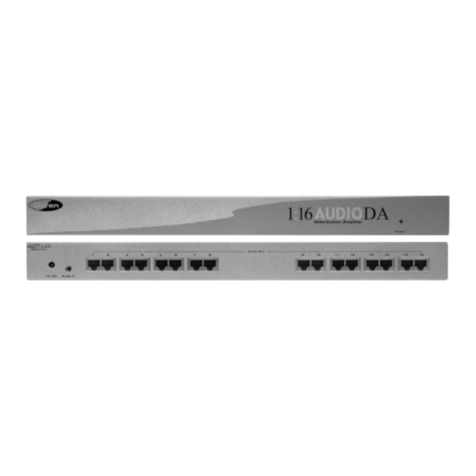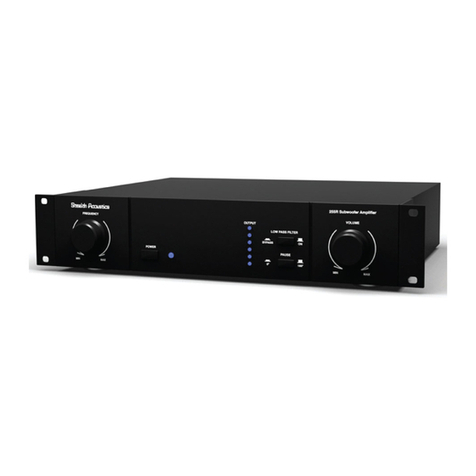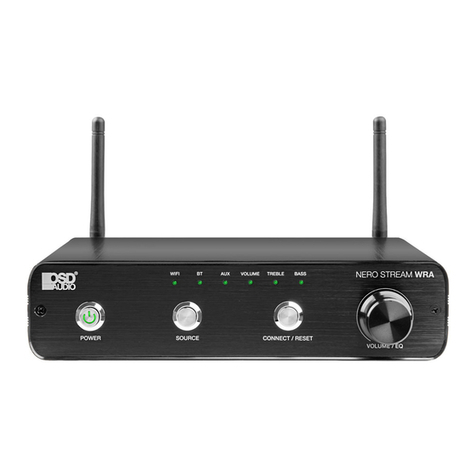953.154UK User Manual
The RMS1202 has 2 independent speaker output channels and can be used as a 2-way slave amplifier.
Set each AUX/CH switch (6) to the ‘out’position for individual channel input.
If connecting input to a channel via the pair of RCA inputs (18, 19, 21), these will be summed to mono.
If connecting input to a channel via Euroblock terminals (17, 20), the green block may be removed from the panel for convenience.
Connect the signal “+”connection to the “+”screw terminal and the “-”connection to the “-”screw terminal.
If there is a separate “ground”connection (i.e. balanced cable), connect this to the “G”terminal.
Otherwise, for unbalanced connections, connect signal to “+”and ground to “G”(or link both “-”and “G”with a piece of wire)
If 2 or more channels will share the same audio source, there is an option to connect this to the AUX input (21)
To route the AUX to any of the output channels, press the AUX/CH switch to the ‘in’position for each channel to receive the AUX input.
For convenience, the AUX/CH switch (6) can be switched in or out whenever AUX or individual channel input is needed.
For announcements and alerts, there is a PAGING MIC XLR input on the rear panel (25)
Connect a microphone to this input if required and select the PHANTOM power DIP switch (23) to “on”if it is a condenser microphone
which requires external phantom power from the XLR connector. Next to the PHANTOM power DIP switch is the VOX DIP switch for
voice override. Switching this to the “on”position will cause all other inputs to be muted when a sound is detected through the paging
microphone input. The amount by which this muting takes effect is adjusted using the “VOX”rotary trim control (24)
The paging mic input can be switched to either output channel by pressing in the PAGE MIC on/off switch. The paging mic is governed
by a GAIN control (8) and BASS + TREBLE tone controls (1, 2). If the microphone is too quiet, increase the GAIN control or if it is too
loud, turn this control down. Adjust the BASS and TREBLE controls to achieve the required tonal balance for the microphone output.
If available, connect a 24V trigger from an alarm panel to the alarm contacts (26) to mute all except channel 1 in an emergency.
Connect the rear IEC inlet (13) to the mains using the supplied mains lead (or an equivalent approved type).
Ensure that the supply voltage is correct for this equipment and that the mains outlet is switched on.
Operation
When all signal and speaker connections are made, power up the RMS1202 and gradually increase the LEVEL control (9) of each
channel to check the output from both zones. Adjust the levels to the required amount and use the BASS and TREBLE controls (4, 5)
to adjust the tone as necessary. For each EQ control, the 12 o’clock position is zero and rotating left decreases the amount of bass or
treble, whilst rotating right increases the amount of bass or treble.
Test the paging mic input by gradually adjusting the GAIN control (8) to the level needed to hear the microphone clearly through all
channels. Again, adjust BASS and TREBLE controls (1, 2) to ensure that the paging mic output is clear and intelligible. If the VOX
function is being used, adjust the VOX control (24) on the rear panel to the sensitivity required to hear announcements over
background music. If needed, test the emergency mute contacts (26) by applying 24V across the terminals as indicated –all inputs
except for the paging microphone should be muted.
After use, turn down all LEVEL controls before powering down to avoid loud pops or clicks through the connected speakers.
Specifications




